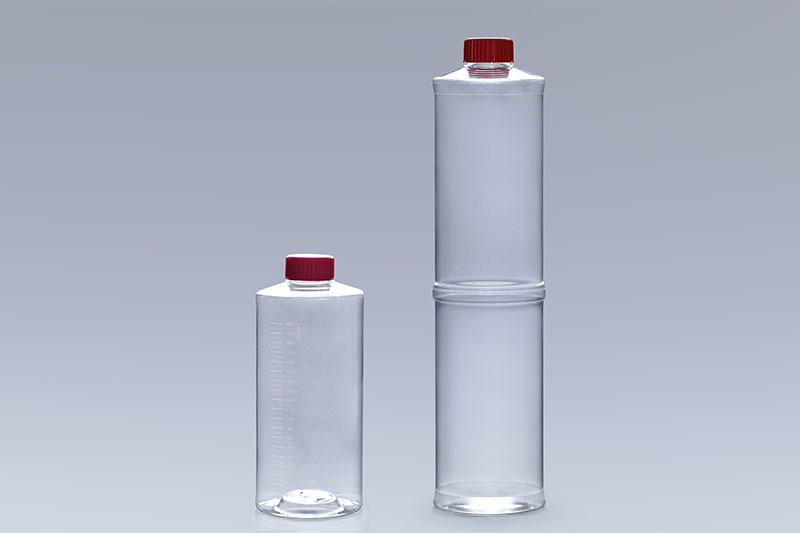The cell culture roller bottles are a high-quality consumable that can meet the requirements for large-scale production of cells and tissues in both experiments and industrial production. It is widely used in the cultivation of animal and plant cells, bacteria, and viruses. Contamination is often encountered during cell culture. The common types of pollution are as follows:
1. Bacterial contamination
Bacteria look like black fine sand under an ordinary inverted microscope, and may have different shapes according to the different infected bacteria. The culture medium generally turns turbid and yellow, which has a significant impact on cell growth, and most of the cells die within 24 hours.
2. Mold pollution
The culture solution in the cell culture roller bottles is clear, and there is no impurity under the inverted microscope. After 2-3 days in a 37-degree incubator, it is still clear, but there are flocculent impurities. Cells can still grow when obvious hyphae are seen, but after a long time, the viability of the cells becomes poor.
3. Virus contamination
Virus contamination is not easy to detect. Cells and culture medium did not change significantly. Viruses are also not visible under an inverted microscope. Most viruses have little effect on cell growth, and some exogenous viruses can cause cell mutation and transformation. Virus contamination can interfere with infection and yield of the virus of interest.
5. Mycoplasma pollution
Mycoplasma is not visible under an inverted microscope. In the early stage of contamination, the culture medium is not turbid. In the late stage of contamination, discoloration of the culture medium, inhibition of cell growth, clustering of cells, small particles or even death will occur under the microscope.
When using cell culture roller bottles to cultivate cells, attention should be paid to the sterility during the operation. Operators should do their own disinfection work to prevent the growth of various pollution sources and affect the cell culture process.
The FAI climbed 5.9 percent year-on-year in the first 11 months of 2018, quickening from the 5.7-percent growth in Jan-Oct, the National Bureau of Statistics (NBS) said Friday in an online statement.
The key indicator of investment, dubbed a major growth driver, hit the bottom in August and has since started to rebound steadily.
In the face of emerging economic challenges home and abroad, China has stepped up efforts to stabilize investment, in particular rolling out measures to motivate private investors and channel funds into infrastructure.
Friday's data showed private investment, accounting for more than 60 percent of the total FAI, expanded by a brisk 8.7 percent.
NBS spokesperson Mao Shengyong said funds into weak economic links registered rapid increases as investment in environmental protection and agriculture jumped 42 percent and 12.5 percent respectively, much faster than the average.
In breakdown, investment in high-tech and equipment manufacturing remained vigorous with 16.1-percent and 11.6-percent increases respectively in the first 11 months. Infrastructure investment gained 3.7 percent, staying flat. Investment in property development rose 9.7 percent, also unchanged.
 English
English



















































 Cell Culture Roller Bottles
Cell Culture Roller Bottles